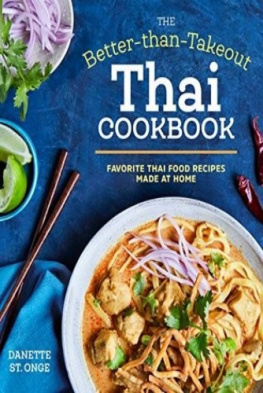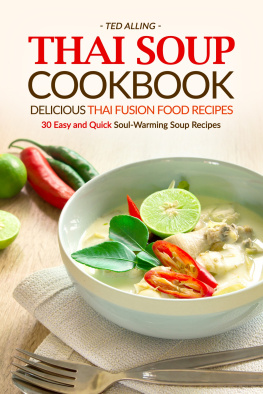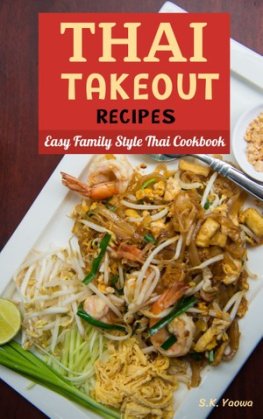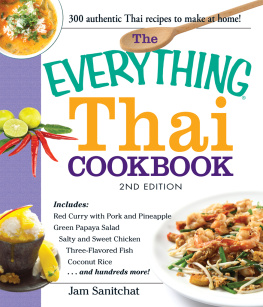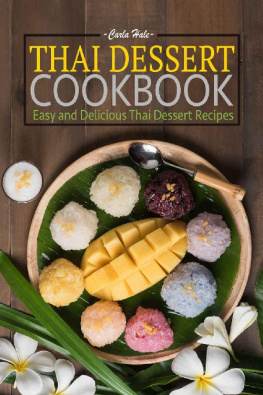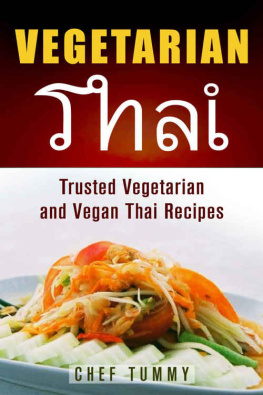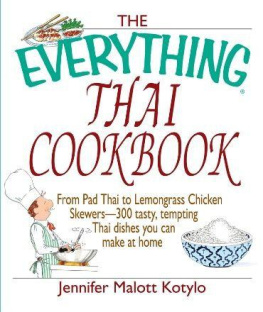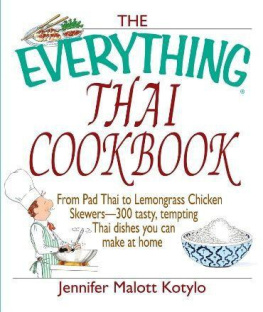Copyright 2017 by Danette St. Onge, Berkeley, California No part of this publication may be reproduced, stored in a retrieval system or transmitted in any form or by any means, electronic, mechanical, photocopying, recording, scanning or otherwise, except as permitted under Sections 107 or 108 of the 1976 United States Copyright Act, without the prior written permission of the Publisher. Requests to the Publisher for permission should be addressed to the Permissions Department Rockridge Press, 918 Parker St, Suite A-12, Berkeley, CA 94710. Limit of Liability/Disclaimer of Warranty: The Publisher and the author make no representations or warranties with respect to the accuracy or completeness of the contents of this work and specifically disclaim all warranties, including without limitation warranties of fitness for a particular purpose. No warranty may be created or extended by sales or promotional materials. The advice and strategies contained herein may not be suitable for every situation. This work is sold with the understanding that the publisher is not engaged in rendering medical, legal or other professional advice or services. If professional assistance is required, the services of a competent professional person should be sought. Neither the Publisher nor the author shall be liable for damages arising herefrom. The fact that an individual, organization or website is referred to in this work as a citation and/or potential source of further information does not mean that the author or the Publisher endorses the information the individual, organization or website may provide or recommendations they/it may make. Further, readers should be aware that Internet websites listed in this work may have changed or disappeared between when this work was written and when it is read. For general information on our other products and services or to obtain technical support, please contact our Customer Care Department within the U.S. at (866) 744-2665, or outside the U.S. at (510) 253-0500. Rockridge Press publishes its books in a variety of electronic and print formats. Some content that appears in print may not be available in electronic books, and vice versa. TRADEMARKS: Rockridge Press and the Rockridge Press logo are trademarks or registered trademarks of Callisto Media Inc. and/or its affiliates, in the United States and other countries, and may not be used without written permission. All other trademarks are the property of their respective owners. Rockridge Press is not associated with any product or vendor mentioned in this book. Cover photography Hlne Dujardin
Interior photography Paritha Wannawanit, . ISBN: Print 978-1-62315-861-3 | eBook 978-1-62315-862-0

To my mother, Patawin, who taught me that
making and sharing good food is an expression of love.
Contents
Introduction
W ith its delicate balance of five flavorssweet, sour, salty, bitter, and spicyThai food has become a restaurant favorite since it was introduced to American diners in the 1960s and 70s. In some cities, its now a more popular takeout option than pizza. Theres nothing more comforting after a long day of work than ordering Thai food and curling up on the couch in front of the TV. But with just a bit of preparation and effortand not much more time than it takes to drive to your local takeout joint for pickup or wait for the delivery guythose same satisfying, tasty dishes can be made at home.
Cooking at home is cheaper and healthier than takeoutyou can use fresh, high-quality ingredients and control the amounts of oil, salt, and sugar. In addition, you have precise control over spice levels, rather than trusting in nonstandardized restaurant spiciness scales and hoping for the best. You can also make just one dish and customize each serving for individual tastes in your household, rather than having to call in separate orders for those who cant get enough chile heat and those who prefer their flavors mild.
Anotherperhaps surprisingargument for making your own Thai food is the fact that, in many places, this is the only way to get more authentic Thai tastes. To cater to palates that have been trained by the prevalence of Chinese American restaurants, Thai restaurants in the United States often feature dishes that are not actually Thai at all, or that have been so Westernized that they would not be considered authentic by purists.
By offering pick-your-protein and pick-your-spice-level menus, American Thai eateries have, perhaps unwittingly, made it so that even avid Thai-food devotees might be unfamiliar with how these dishes are usually made in Thailand, and they lose that all-important balance between the five flavors. Plus, many of the simple-yet-satisfying favorites that Thai people make regularly at home are rarely found on Thai takeout menus. Even with the constraint of limited access to Asian ingredients, making your own Thai food can get you much closer to the real deal.
Probably the number-one deterrent to attempting Thai cuisine at home is the perception, due to its complex, layered flavors, that it is very complicated and labor intensive. While some specialties, such as delicacies originally intended for the Thai royal court, do require hard-to-find ingredients or are laborious to prepare, many just-as-traditional Thai dishes are neither difficult nor time consuming and can easily be made at home with ingredients available in most markets, no special equipment required. These dishes will be our focus in this book.
As for my own experience with Thai cuisine, its quite an East-West fusion itself. I was born in California to a Thai mother and an American father. My mother was a skilled cook, famous among her friends for not only her Thai and Chinese cooking but her American, European, and Middle Eastern dishes as well. She instilled a love of food and cooking in me from a young age, and we cooked and ate together often, from stir-fries and curries to baking cakes and making coq au vin, often followed by Thai noodle soup for a midnight snack.
When I was 10, my family moved to Bangkok and we lived there for several years. It was during this time that I became really familiar with the Thai way of eating, from breakfast through that midnight snack and all the many meals and snack breaks in between (I think perhaps the only beings that eat more often than Thais are Hobbits).
After our return to California, my family opened a Thai restaurant, where I assisted my mother in ordering ingredients, devising the menu, and serving customers. Through this experience, I learned which Thai dishes are most popular with American customers and how to adapt traditional Thai food in the context of available ingredients and prevailing tastes.
This book will walk you through navigating Asian markets and stocking your pantry and kitchen for Thai cooking, as well as explain common Thai cooking techniques. The quick-and-easy recipes include iconic dishes from Thai restaurant menus, homey family favorites, and street-food classics. Along with helpful tips and shortcuts, and suggestions for substitutions when necessary, it gives you all you need to become an adept Thai cook. Once youve got the hang of it, you might never reach for a takeout menu again!

CHAPTER ONE The Thai Kitchen T he key to having a delicious Thai meal on your table in an hour or less is preparation. That means having your kitchen stocked with a few essential Thai ingredients and some basic equipment, organizing everything, and timing tasks just right. Most of the foods, condiments, and equipment youll need can be found at major supermarkets and Asian grocery stores, but other options include local farmers markets and online shops (see Resources, ). Many of the sauces and pastes can be made ahead of time and kept on hand for weeks or months, so that you can easily make a favorite curry or noodle dish in less than half an hour. Once you have the staples on hand and get the hang of a few simple Thai cooking techniques, youll be able to whip up countless Thai dishes at a moments notice. Start by picking just one or two of your favorite Thai dishes, determine what ingredients you will need for those, and go from there. And dont get too caught up in worries about authenticitywhile it is certainly important, Thai recipes vary from cook to cook, household to household, and between regions, so it would be difficult to say that there is only one correct way of making any Thai dish. Make them your own! Feel free to omit ingredients you dont like or cant find, add things you do like, or make use of the many substitutes or adjustments suggested in this chapter and in the recipes themselves.
Next page
